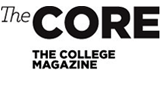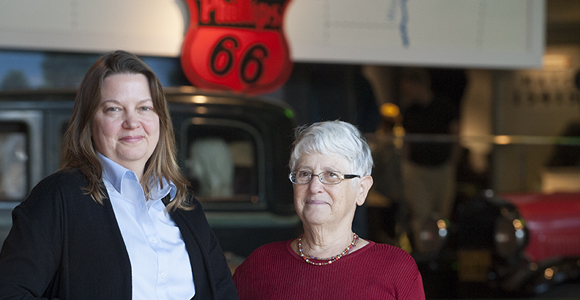
Time pieces
Two curators dust off stories from America’s attic.
Elizabeth Station
If the Smithsonian’s National Museum of American History ever caught fire, curator Deborah Warner, U-High’58, AB’62, wouldn’t save the tattered flag that inspired the Star Spangled Banner. She wouldn’t grab Benjamin Franklin’s walking stick, Jim Henson’s original Kermit the Frog, or Nancy Reagan’s inaugural ball gown.
Instead, Warner would dash down the hall from her fifth-floor office to a storage room and rescue an 18th-century surveyor’s compass. The heavy brass instrument is not elegantly designed, but Warner believes it may be the first example of American-made technology. On the way out she might scoop up a 19th-century schoolroom globe or an eight-planet model of the solar system used to teach early science classes at Vassar College.
As a curator in the division of medicine and science, Warner has spent 50 years caring for the museum’s scientific instruments collection. She has blogged about the Smithsonian’s collection of historic water meters and in 2011 published Sweet Stuff, a chronicle of sugar and sweeteners in America. Through her research and detective work, she also has uncovered gaps in the literature. “No one,” she notes, perplexed, “has done a decent history of American thermometry.”
When she attended the College, Warner was one of few female students focusing on the history of science. Her professors didn’t discourage her interest because, she says, “there was an attitude that, ‘You don’t have to plan for a career. You women will get married and be on the board of the Art Institute.’”
Warner instead pursued a master’s in the history of science at Harvard. She landed a job at the Smithsonian in 1963, a year before its new National Museum of History and Technology (renamed in 1980) opened to the public. “It was a wonderful time when government was expanding,” she says. Curators planned a big museum and traveled the country buying equipment from university science labs that were modernizing. “Sometimes we knew what we were doing,” says Warner, but often they worked like early archaeologists at the Oriental Institute—bringing artifacts home first and studying them later.
While some objects that Warner collected are on public display, she also works to make early American science accessible to amateur and professional historians who may never visit the museum. Type keywords like “compass” or “spectrometer” into the Smithsonian’s online database, and links to hundreds of entries and photographs appear. Warner researched or wrote many of the descriptions.
In the 1970s Warner organized the museum’s first exhibit on women in science. Meanwhile, her future colleague Bonnie Lilienfeld, AB’84, was growing up in western New York. Lilienfeld arrived at the College “in ponytails and overalls” with dreams of becoming an archaeologist; she left with a degree in music and a deep interest in the city of Chicago. Moving to Washington in 1987, she discovered a University of Chicago “underground” at the Smithsonian, including Warner.
Lilienfeld started as a secretary but soon was working on museum exhibits with history of technology curator Steven Lubar, AM’77, PhD’83. In the late 1990s she rescued a Chicago “L” car from a Skokie scrapyard and had it restored for the museum’s transportation exhibit. Visitors can hop aboard the CTA train, listen to the simulated rattle of tracks, and blink at flickering lights timed to match the system’s electrical current circa 1959.
Creating the exhibit, Lilienfeld became a bit obsessed. “I wanted entire train stations, because they’re just so wonderful,” she says. “I wanted entire trains.” Now, as deputy chair of the museum’s division of home and community life and curator of its 50,000-piece ceramics and glass collection, she has learned to be strategic. In 2012 she organized American Stories, an exhibit that connects more than 100 iconic objects—a fragment of Plymouth Rock, Muhammad Ali’s boxing gloves— to the nation’s chronological narrative.
Today curators have more modest budgets, fewer assistants, and less space for acquisitions than they did a decade ago. “The world keeps growing, and the museum walls don’t expand,” says Warner. Since the museum can display only a small fraction of its three million artifacts, storage cabinets hold curiosities like the 580 matched tuning forks that German physicist Rudolph Koenig left in Philadelphia after the 1876 World’s Fair.
As public historians, both Warner and Lilienfeld understand that years of research about an object may lead to two lines on a museum label or an online catalog entry. “You try to figure out ways to get this fairly complex history out there in a way that people will engage with it,” says Lilienfeld. “One thing that really drives me is the stories behind the stuff.”
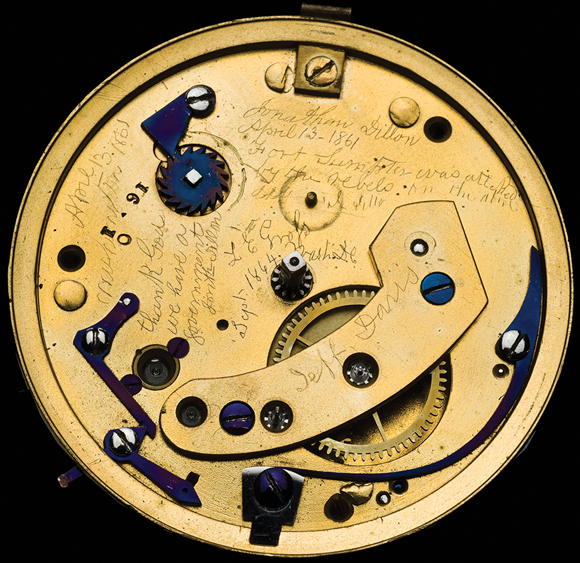
Abraham Lincoln’s pocket watch
Manufactured circa 1850; engraved in 1861 by Jonathan Dillon, Washington, DC.
Lilienfeld: The museum has the pocket watch that Lincoln wore. It was apparently in the shop for repairs or cleaning when the Civil War broke out, and the man repairing it scratched words inside: “Fort Sumter was attacked ... thank God we have a government.” He also wrote the date and his name.
This man’s family legend had always been that he had scratched something in there. It’s pretty complicated to open a watch like that—and nobody wanted to risk anything happening to it. But a descendant of the Dillon family contacted a curator, and the museum decided that they would open it.
A trained watchmaker opened the watch and confirmed what Dillon wrote. Later on somebody else wrote “Jeff Davis” and another person wrote something too. Lincoln was carrying this around, and the whole time he never knew the writing was there.
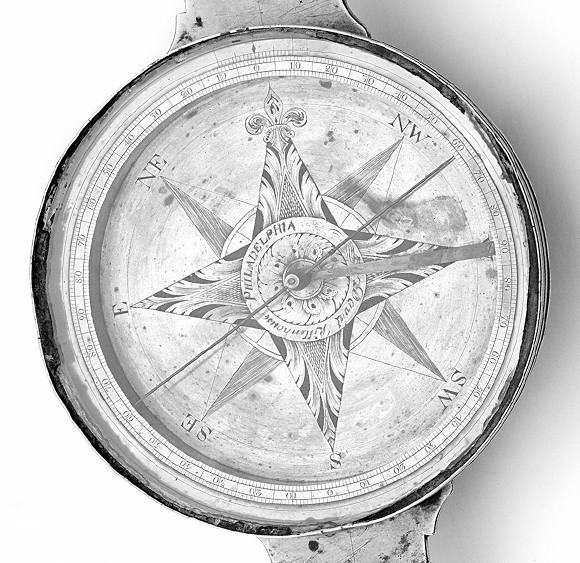
Surveyor’s Vernier compass
Designed by David Rittenhouse in Philadelphia, circa 1785.
Warner: This compass is the one instrument I would grab and take out if the building were on fire, and the one that I am most happy about having collected. It is incomplete; it’s an oddity, but I think this is one of the first American scientific instruments and technological achievements.
Picture America: vast open spaces; Indians didn’t know from private property. One of the key problems facing the settlers was drawing boundaries. As they did it, they recognized the problem of magnetic variation or declination, which makes it hard to determine true north.
A bunch of smart guys in and around Philadelphia, including David Rittenhouse, designed what became known as the Vernier compass, which has a way to compensate for magnetic variation. This compass has a funny little Vernier scale; you can barely see it, and the mechanism for moving it is crude. What I think, with no documentation to verify it, is that’s Rittenhouse working out this problem.
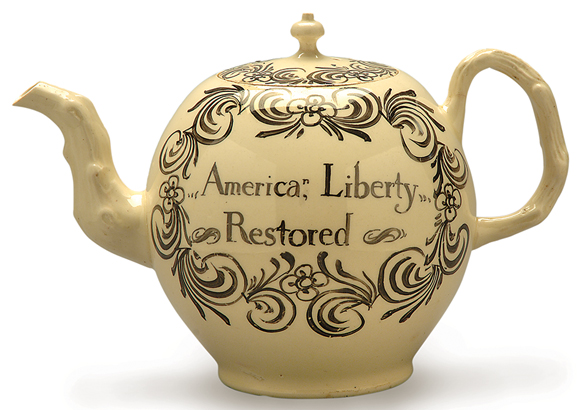
No Stamp Act teapot
Made in England, circa 1766–70. Celebrates the 1766 repeal of the Stamp Act, the first direct tax by the British on the American colonies.
Lilienfeld: The teapot tells an amazing story about British potters making pieces for the American market that highlighted British failures—trade conquers all. I heard about it in 2006, when an auction house in Maine planned to sell it for a collector in a telephone auction. I stayed after work one night to call in. The teapot finally went up for sale around eight o’clock. I’d been sitting there since five, hungry.
The bidding started at around $35,000. I could only bid up to $100,000, and it was going so fast I was afraid I wouldn’t have a chance to say anything. But I waited, things got quiet; I made a bid and got it. I don’t know if I’m supposed to say how much I paid for it. But I went home and said, “Oh my God, I can’t believe I just spent that for a teapot.”
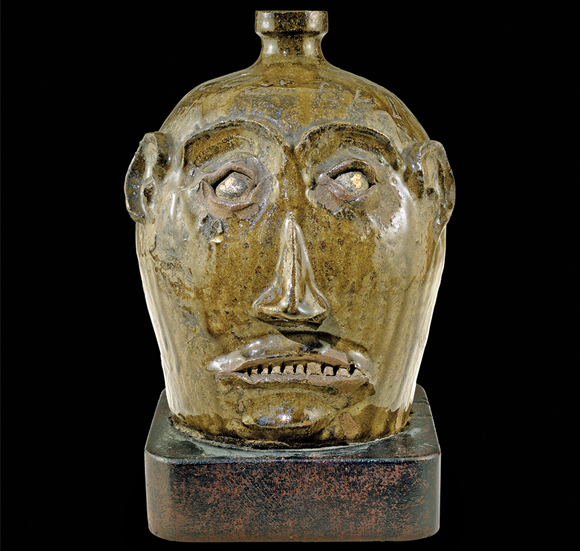
Face jug
Attributed to a slave potter in Edgefield, South Carolina, circa 1850.
Lilienfeld: Face vessels were traced back to a plantation in Edgefield, the only known area to use enslaved labor in the potteries. Slaves did everything from throwing the pots to digging up the clay to taking the pots to market. People think they made these little face vessels as end-of-the-day whimsies or semireligious pieces or burial pieces. Nobody really knows.
Back in the 1990s, a man who wanted to divest himself of his big collection of southern pottery contacted the Smithsonian. My boss and I flew down and spent the night at his house. I stayed in a bedroom with all his face jugs. There’s a physicality of being able to touch these things; if you turn them upside down you can actually see where the potters’ fingers were when they dipped them in the glaze. And you can actually put your fingers there.
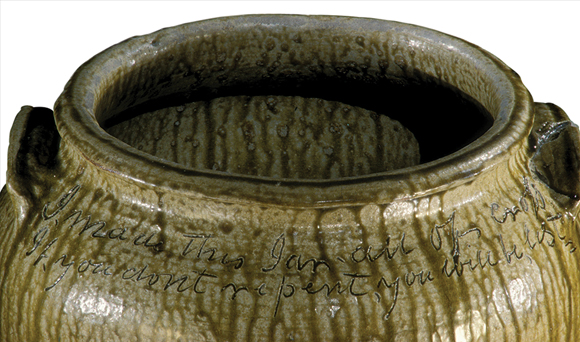
Jar made by “Dave”
Glazed stoneware jar made in 1862 by David Drake, the only enslaved potter known to have signed and dated his work.
Lilienfeld: There are about 20 poem jars by David Drake known to exist; we bought the last dated one from a South Carolina collector. It’s huge, ash glazed, and incredibly heavy. They probably stored food in it; they would have cured meats and things.
The poem on the jar says: “I made this jar all of cross / if you don’t repent you will be lost.” In 1837 South Carolina made it illegal to teach a slave how to read and write, so the fact that Dave could do so is really surprising.
His poems are all different. They don’t come across as bitter. I’m sure he had to be careful about what he wrote. This jar is definitely a highlight of the collection. The pieces that interest me most are the ones that offer a clue into a more complex understanding of American history than what you might get just studying political history.
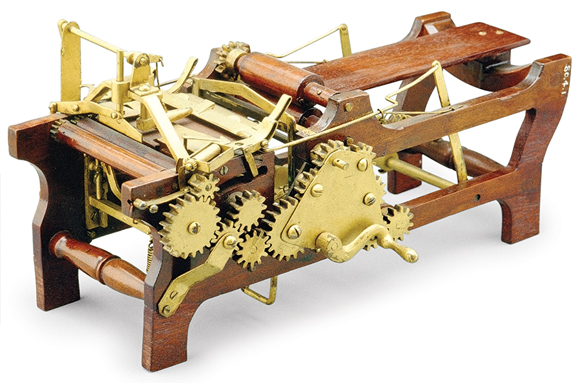
Paper bag folding machine
Inventor Margaret Knight used this model to apply for a patent, awarded in 1879
Her concept is still used to manufacture grocery bags.
Warner: When I came to the museum, what we collected was white guys—elite white guys—and the stuff thereof. There’s been a big expansion over time.
If you look at American industry with feminist eyes, you can see women’s participation. To prepare for the bicentennial in 1976, the museum put up an exhibition that recreated the Philadelphia centennial exhibition in 1876. I put together an exhibit to represent the women’s pavilion, which women in 1876 organized to show they had been very active in art, handicrafts, industry, and professions in America.
Women had obtained a fair number of patents. As a field of endeavor, it was perfectly ladylike: you stayed home and designed something, you sent off a form to the patent office and got a patent. Maybe you could make some money. Margaret Knight had a number of patents used in industry. I see this machine as an example of what a clever woman can do with a little encouragement.
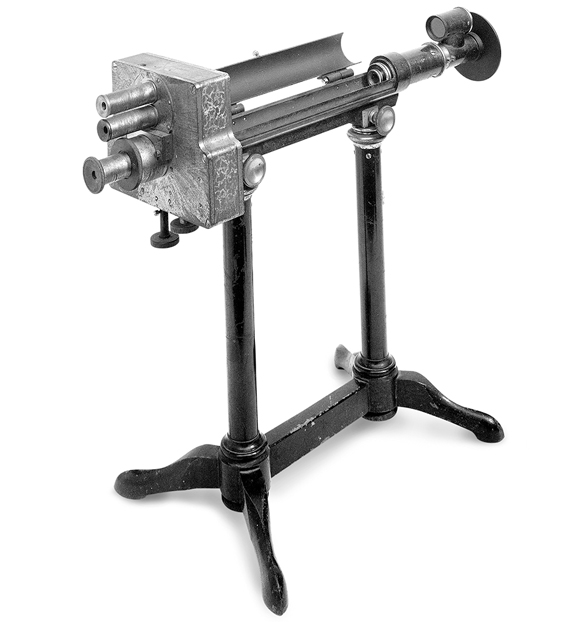
Saccharimeter
Made after 1907, used by the National Bureau of Standards to assess the quality of imported sugar.
Warner: A saccharimeter measures the intensity of a sugar solution. There’s a device at one end that polarizes the light that’s coming through. The sugar solution will rotate the plane of polarization, and you can determine the strength of the solution by the amount it rotates.
In America the tax on sugar was a major source of revenue for both the colonial and federal governments. It was assessed based on the quality of the sugar. Determining whether sugar was raw or refined was a big deal for customs agents. The saccharimeter turned out to be the winning technique, though not until Congress had squabbled over it for decades.
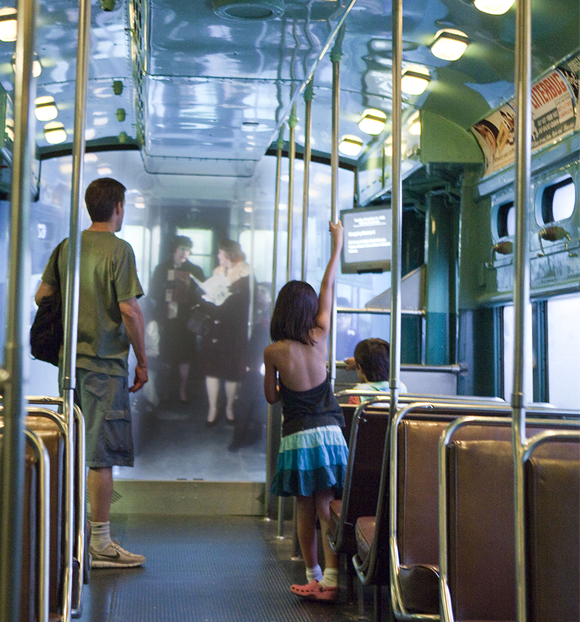
Chicago Transit Authority “L” car
Made in 1959, rapid transit rail car #6719.
Lilienfeld: In the mid-1990s the museum was working on an exhibit about transportation around the country. I traipsed into Steve Lubar’s office and said, “I’d love to work on that.” I had this grand vision of telling the whole story of American transportation through Chicago. You could talk about railroads, shipping, flights—but I ended up focusing on urban renewal and the tension between public transit and road building.
I had always been completely obsessed with Chicago history. During my research I saw on the Chicago Tribune website that they were talking about tearing down the Madison and Wabash “L” station. So I cold-called the Chicago Transit Authority and ended up flying out and talking to them. I learned that the last 6,000-series transit cars were in a rail yard in Skokie, waiting to be trashed.
I bought car #6719 for $1,200—its scrap value. It was half of a “married” pair, but the museum wouldn’t let me collect both. I was very sad and for awhile thought I might collect #6720 and put it in my backyard.
National treasures
See more objects and read more collectors’ stories.
